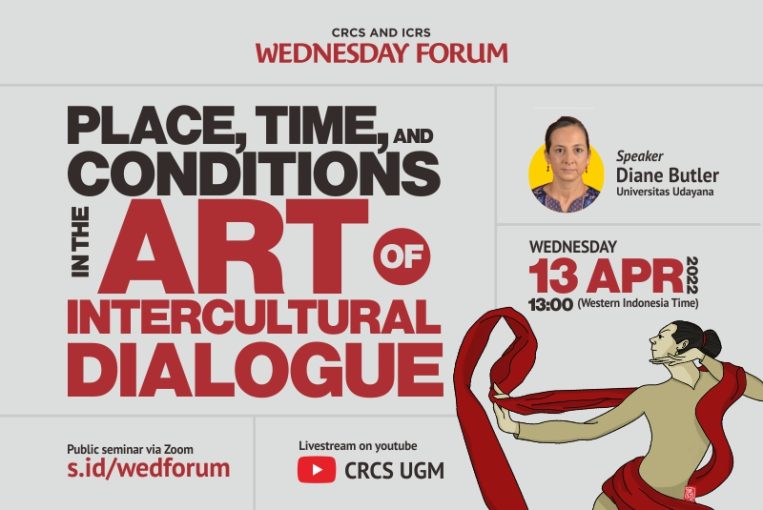
Place, Time and Conditions in the Art of Intercultural Dialogue
Wednesday Forum – 13 April 2022
How can mutual understanding and exchanges among people of different cultures and ethnicities be supported in a manner that recognizes the variety of their worldviews and spatial-temporal-kinesthetic knowledge and cultural and spiritual values? In Diane’s experience, a practice-based approach to the art of intercultural dialogue does not stem from a predetermined method but rather is an organic process that grows from the interactions of the people involved, which will evolve differently in each place depending on its historical and current conditions. One approach that she has greatly appreciated in Indonesia, which has given good results, is by taking into account the place, time and conditions. With this in mind, she will share some aspects one might consider in the fostering of a common field for dialogue.
Diane Butler, PhD is a dance-movement artist, teacher and cultural program director who has collaborated with artists from varied cultures and faiths in the Americas, Europe and Asia for over 35 years and since 2001 resided in Bedulu and Tejakula in Bali, Indonesia. She co-founded Dharma Nature Time, an international foundation to support interculture in cultural environments through sharing in the arts, religiosity and nature. Diane is the first non-Indonesian to earn a Ph.D. in Kajian Budaya from Universitas Udayana, Bali where soon after the Rector appointed her as a volunteer Associate Professor.
The full poster of this event is available here.

